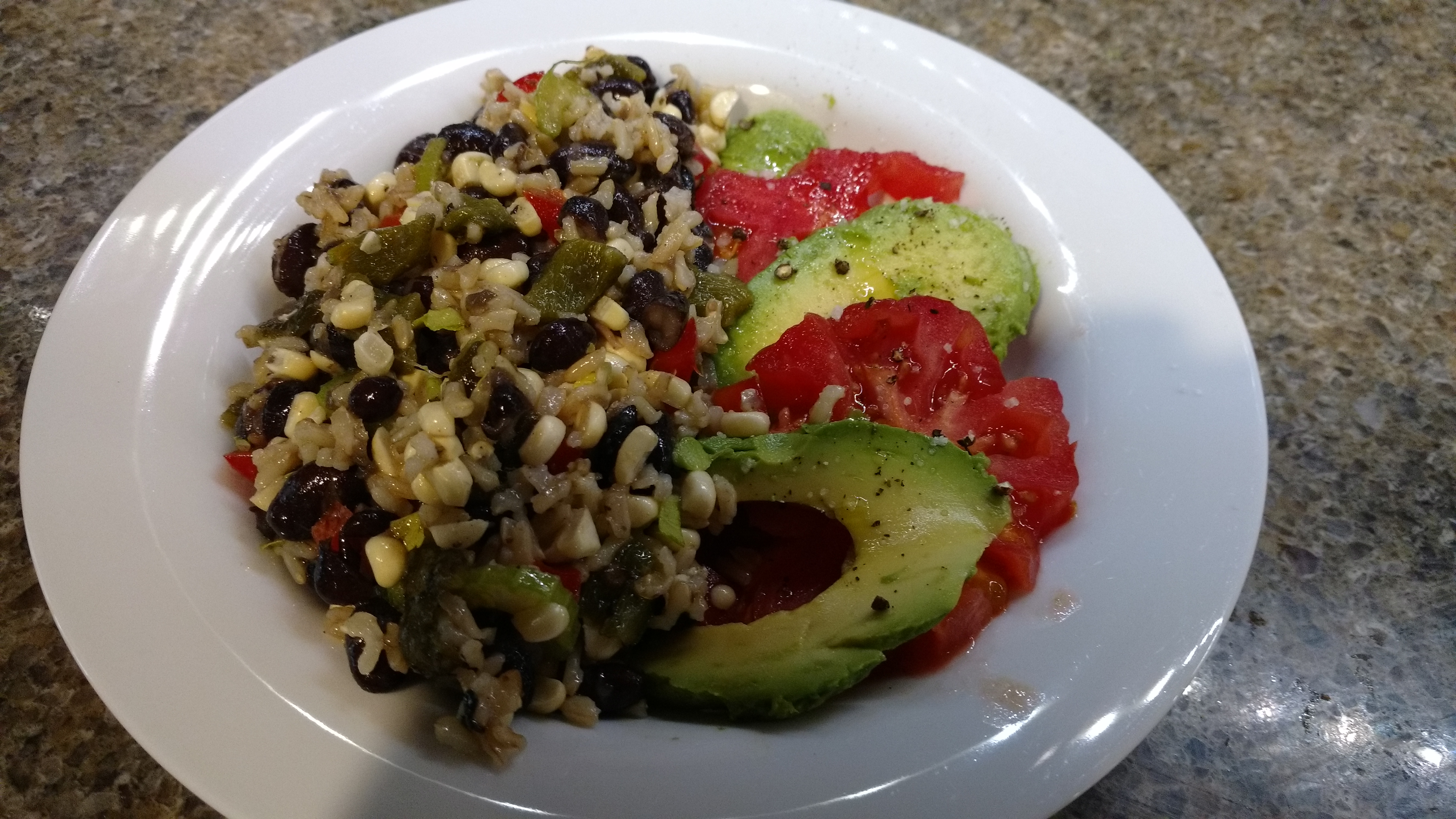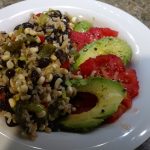
More and final musings on “Why Cook?”
I have been a lifelong cook, primarily because I enjoy it. I enjoy being creative with flavors; when I am playing with my food, one never knows-could be tremendous, could be horrendous…I am thankful that I can cook, though, because over the years I have had to accommodate diet for varying medical conditions.
My mother prepared at least two variations on the meal each evening. One was for my father, who had ulcers along with then unknown IBS (irritable bowel syndrome) and reflux disease. Since next to nothing was actually known about these digestive issues, his diet was bland; picture a hospital tray prepared with a bit of my mother’s finesse. For the rest of us, the meal was usually a bit more inspired, and certainly better seasoned. Today, many people need food prepared for specific dietary concerns, more than ever before.
I have learned the hard way, several times over. When my beautiful daughter was diagnosed with Type 1 Diabetes at the grand old age of eleven, the whole family was thrown into a tizzy. During her week in the hospital, all we managed to learn was how to give practice shots to oranges. (And not very well, at that.) Our first post-diagnosis grocery trip took hours, as my husband and I studied nutrition labels in horror. What in heaven’s name had we been eating up to then? I was so grateful at that point that I not only knew how to cook, my bachelor’s degree had included concentrated study in the science of food and nutrition. Because now, each and every gram of carbohydrate had to be accounted for to figure the exact dose of insulin, and there were limits to the grams of carb that could be eaten at each meal. Let’s see, there’s 13 grams of carb in a cup of milk, 24 grams in ¼ cup of flour… Uh, yeah. We stockpiled cookbooks and magazines in which the carb counts were already included. If you made changes to the recipe, the carbs had to be re-calculated…
Fast forward to now. While conditions like IBS and reflux disease supposedly don’t have a basis in genetics, I have followed in the old man’s footsteps with both, and my unfortunate adult son is well on the way to following mine. I have spent years trying to decipher what might explain my digestive issues and what I should and should not be eating. Be careful for what you ask! My new gastroenterologist pointed me in the direction of the FODMAP elimination diet, which made more than clear that several classes of carbs were culprits. So I am back to cooking for specific dietary needs, now for myself.
Enter this salad. A recipe for kidney bean and rice salad has long been a favorite of my husband. But beans? Hard to digest. And garlic as the major seasoning? Can’t digest that either. Yes, you heard that right. I can use garlic infused oil, but no cloves of garlic. Compensating for the loss of that strong a flavor basically meant starting over. Time to play with the food… A Mexican flavor profile has the potency to substitute for the garlic heavy French one. Sprouting powerfully improves both the digestibility and available nutrition of beans, and I receive easy-to-sprout fresh black beans in my CSA box.* Black beans and corn in tandem are delicious. Add in some roasted poblanos, diced serranos, and avocado. Dinner is done and everyone can eat it. And thankfully, there are no hospital trays in sight!
Mexican Rice and Black Bean Salad
Ingredients
- 1-½ cups cooked brown rice
- 2 cups cooked black beans from dry beans or canned
- 2 ears of corn stripped from the cob (can use canned or frozen)
- 1 roasted poblano pepper chopped
- ¼ cup diced red bell pepper
- 1 tablespoon diced Serrano pepper
- ¼ cup sliced celery
- 1 scallion thinly sliced
- Dressing
- 2 tablespoons garlic infused oil can substitute fresh diced garlic clove and olive oil
- 1- tablespoon lime juice
- 2 teaspoons orange juice
- pinch each of salt pepper, cumin and oregano
- Avocado and tomato for serving
Instructions
- Combine all ingredients through scallions in a large mixing bowl. Whisk together the dressing ingredients, toss with the salad and chill. Serve on plates with sliced tomato and avocado.
*I start with the freshest dry beans I can find. The beans I get in my CSA box are always fresh and sprout easily. I also have had good performance from Rancho Gordo beans, available online at https://www.ranchogordo.com/
Using a quart jar with a sprouting jar strainer lid, soak the beans for 8 hours, then strain the water. Rinse and strain the beans 3-4 times a day until small white plant sprouts appear. Cook as usual.

